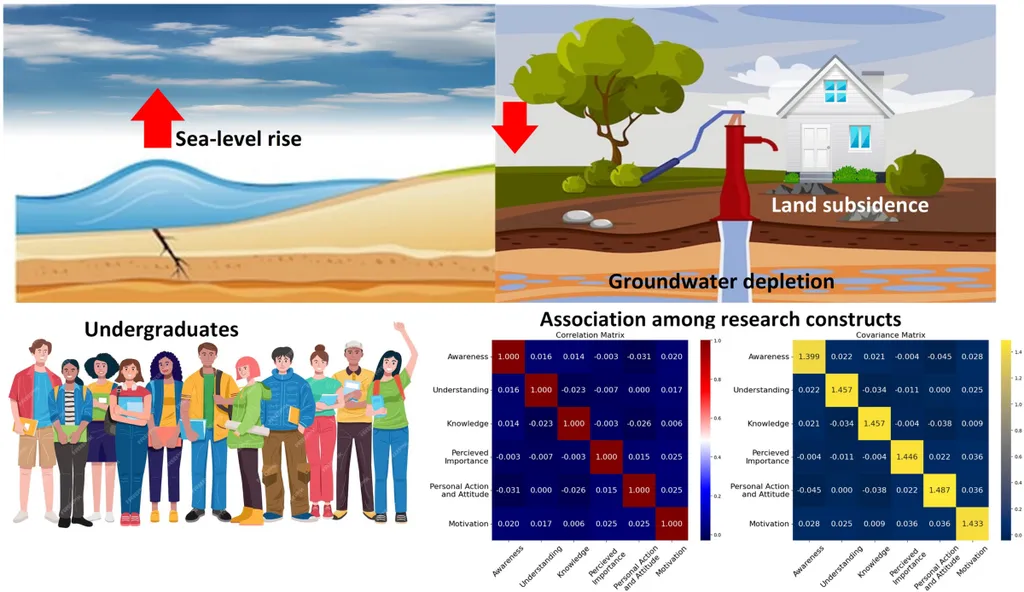In the bustling, ever-expanding cities of Nigeria, particularly Lagos, and the resource-rich Niger Delta, an invisible threat is steadily reshaping the landscape, with significant implications for the energy sector and infrastructure development. Land subsidence, primarily driven by human activities such as excessive groundwater extraction, oil and gas exploitation, and mining, is causing infrastructure damage, increased flood risks, and environmental degradation. Yet, despite its severity, this issue remains under the radar for many, receiving insufficient policy attention and public awareness.
A recent integrative review, published in *Discover Environment* (which translates to *Explore Environment* in English), sheds light on this pressing environmental issue. Led by Femi Emmanuel Ikuemonisan from the Department of Physics (Geophysics Research Group) at Lagos State University of Education, the study synthesizes existing knowledge on land subsidence in Nigeria, analyzing its causes, impacts, and the effectiveness of monitoring methods.
The research employs a mixed-methods approach, combining a structured literature review with geospatial analysis. Scientific databases, including Web of Science and Scopus, were searched using targeted keywords to retrieve relevant studies. Ground-based GPS data, processed by the Nevada Geodetic Laboratory, were analyzed to derive vertical land motion. Additionally, Sentinel-1 SAR data (2015–2023) were analyzed using the Parallel Small Baseline Subset Interferometric Synthetic Aperture Radar (P-SBAS-InSAR) technique via the European Space Agency’s Geohazards Exploitation Platform.
The findings reveal that land subsidence is widespread yet spatially variable across Nigeria. Both GPS and InSAR datasets confirm active vertical displacement, with significant subsidence rates in urban areas like Lagos. “While human-induced activities, particularly groundwater extraction, are the main causes of land subsidence, uncertainties remain regarding the extent to which each factor contributes,” Ikuemonisan explains.
One of the critical gaps identified in the study is the uneven distribution of research. Most studies have focused on the southern regions, especially Lagos and the Niger Delta, while the northern region has received little or no attention despite being covered by available InSAR data. This limitation underscores the need for a more comprehensive understanding of subsidence across the country.
For the energy sector, the implications are profound. Oil and gas extraction, along with mining activities, contribute significantly to land subsidence. As Nigeria continues to expand its resource exploitation, understanding and mitigating subsidence becomes crucial to prevent infrastructure damage and environmental degradation. “Promoting sustainable groundwater management, strengthening regulatory measures, and raising public awareness are essential steps,” Ikuemonisan emphasizes.
The study also highlights the importance of targeted geospatial analysis, greater use of satellite data, and improved ground-based monitoring. These efforts can support effective subsidence management and reduce damage to infrastructure, ensuring environmental stability in areas at risk.
As Nigeria continues to develop, the findings of this research could shape future policies and practices in the energy sector. By addressing land subsidence proactively, the country can mitigate risks and ensure sustainable development. The call to action is clear: increased awareness, better monitoring, and robust regulatory frameworks are needed to tackle this invisible yet impactful environmental challenge.
With the insights provided by Ikuemonisan’s research, published in *Discover Environment*, the path forward becomes clearer. The energy sector, along with policymakers and the public, must heed these findings to safeguard Nigeria’s infrastructure and environment for generations to come.

